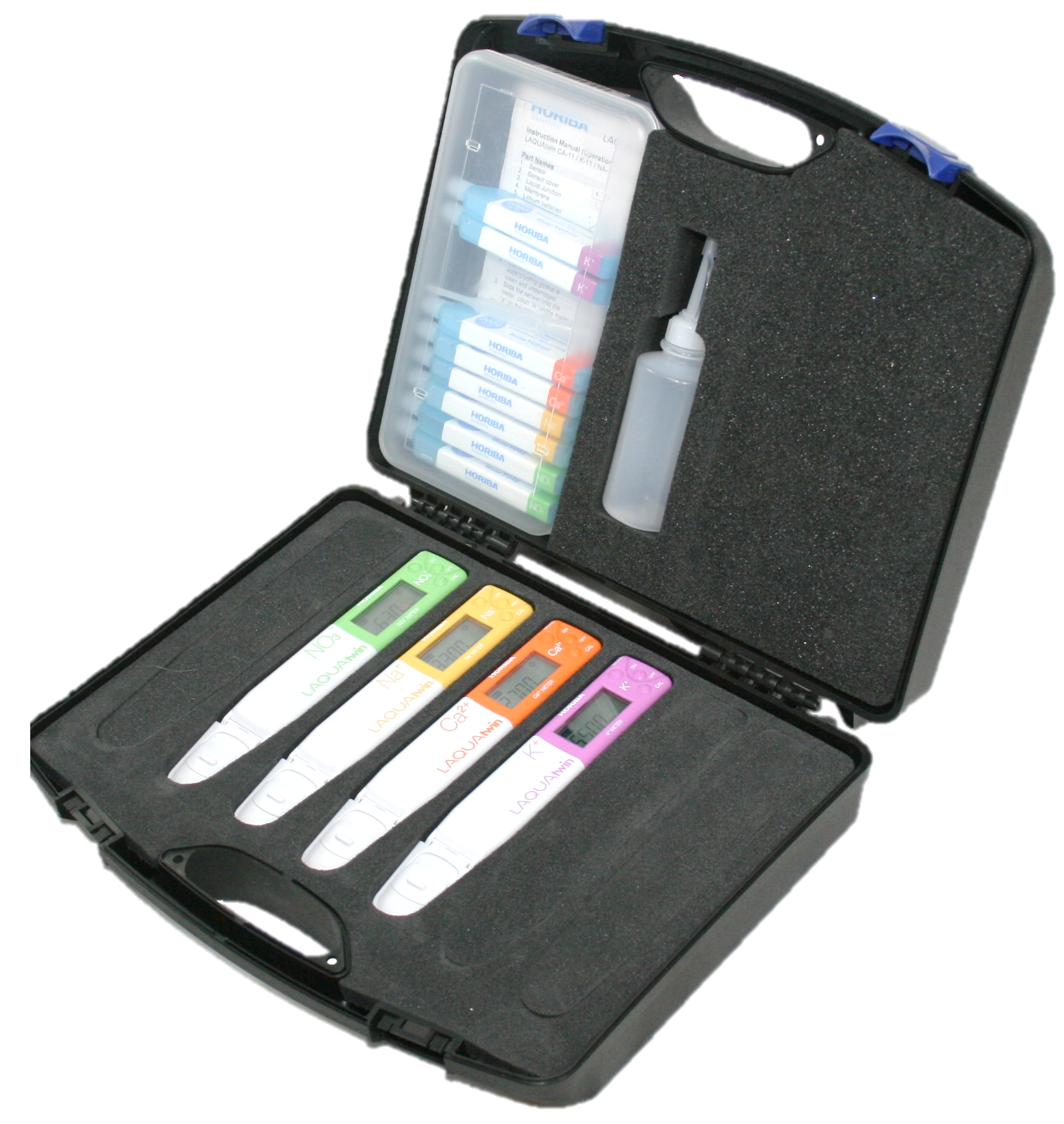Potassium Determination in Plant Tissue
Comparison of LAQUAtwin Potassium Ion Meter and ICP Spectrometry
Trials revealed close significant correlation (r values were 0.80 and 0.93 for first trial and second trial, respectively) between the LAQUAtwin Potassium Ion meter readings and ICP results obtained from plant’s fresh petiole sap and dried tissue, respectively. This suggested that LAQUAtwin Potassium Ion meter could be an appealing field method substitute for rapid determination of potassium concentration in plant.
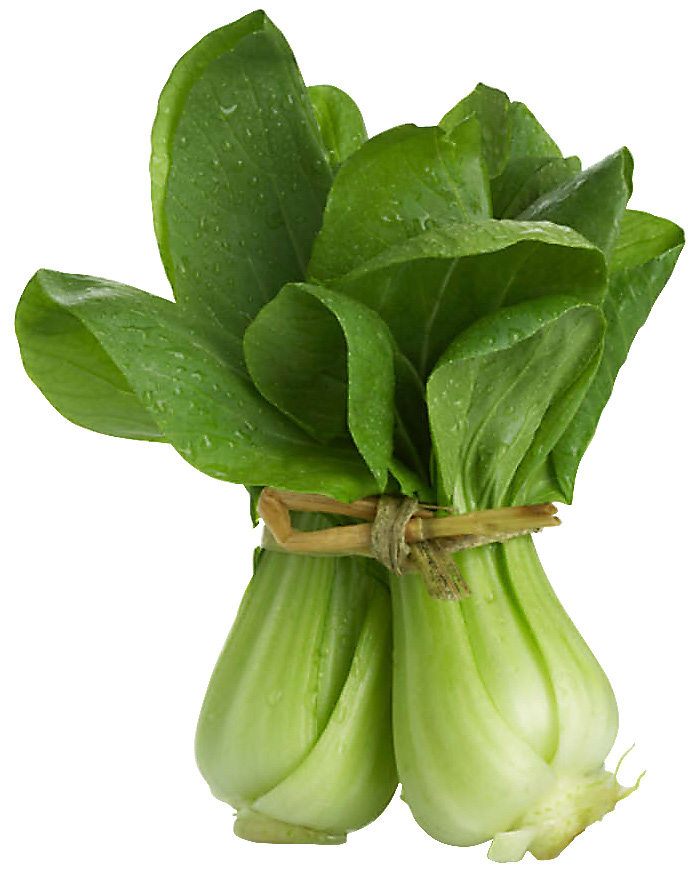
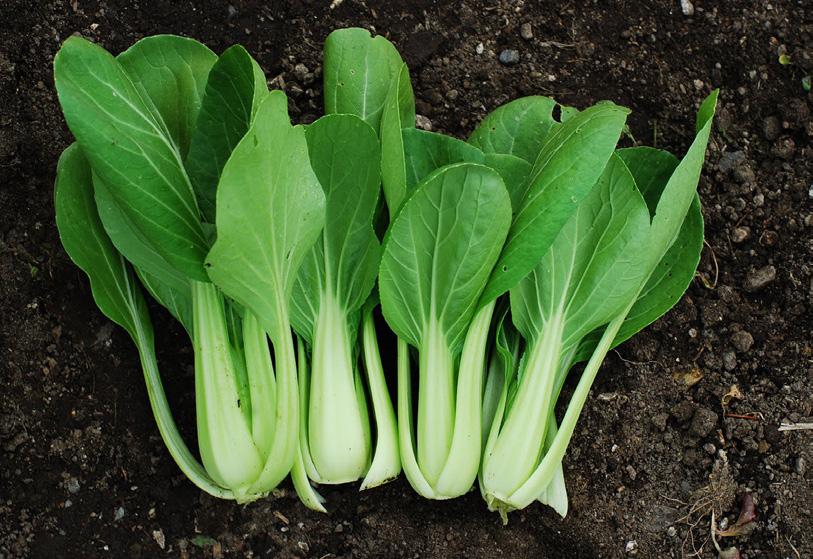


Introduction
Plant tissue analysis has been used for evaluating the nutritional status of vegetable crops. The conventional laboratory method for plant tissue analysis is Inductively Coupled Plasma (ICP) spectrometry, which requires a dried plant tissue to be subjected to either wet digestion or dry ashing prior to analysis. Among the recent techniques for nitrate-nitrogen (NO3-N) and potassium (K) management in vegetable crops has been the use of petiole sap analysis to determine supplemental fertilizer needs.
The LAQUAtwin Potassium Ion meter was used to measure K concentration in fresh petiole sap of pak choi (Brassica rapa, Chinensis group) plants, which were grown, applied with K and other nutrients, and harvested at University of Hawaii’s Magoon Research facility. The results were compared to K concentration in dried tissue of the same plant analysed by wet digestion and ICP.
The pocket-sized LAQUAtwin Potassium Ion meter is ideal for on-site testing as it provides quick result with just a few drops of sample that doesn’t require tedious preparation. It eliminates the need to transport samples to a laboratory for costly and time-consuming ICP spectrometry analysis.
Method
Sample Collection and Preparation
For LAQUAtwin Potassium Ion meter analysis, plant’s petioles were collected immediately after harvest at 5 weeks after emergence and fresh weights were recorded. Petioles were pressed in a garlic press to extract sap. One (1) ml of sap was diluted with deionized water to a volume of 5ml. After calibrating the LAQUAtwin Potassium Ion meter according to manufacturer’s instructions, few drops of the diluted sap were placed into the sensor of LAQUAtwin Potassium Ion meter to determine the potassium concentration.
For ICP spectrometry analysis, plants were placed in a conventional oven at 70°C and were dried for 72hrs. The dried weights were recorded. The dried samples were submitted to a laboratory for ICP spectrometry analysis to determine the potassium concentration.
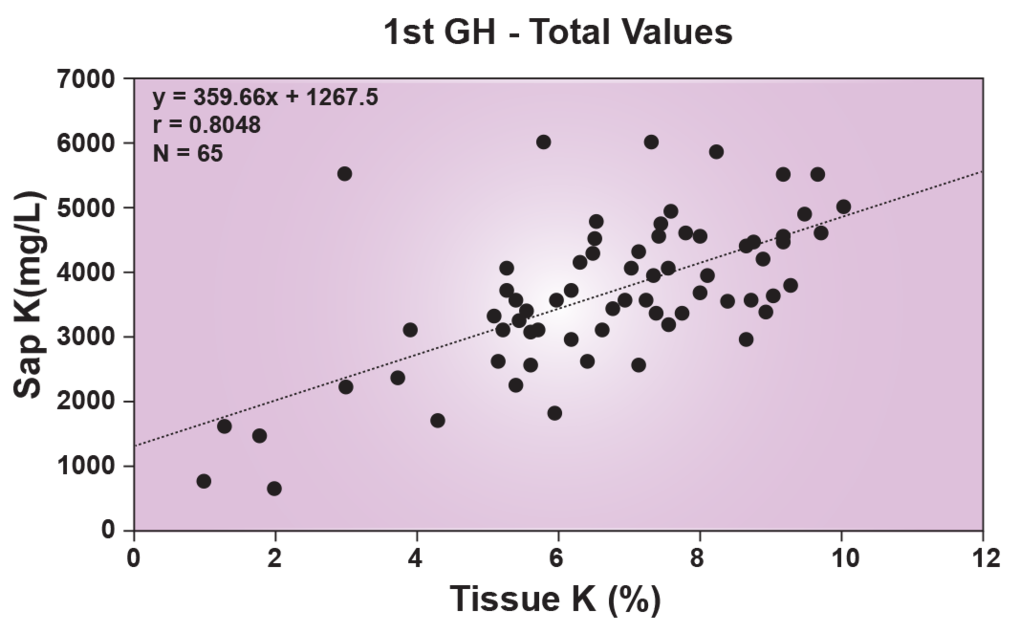
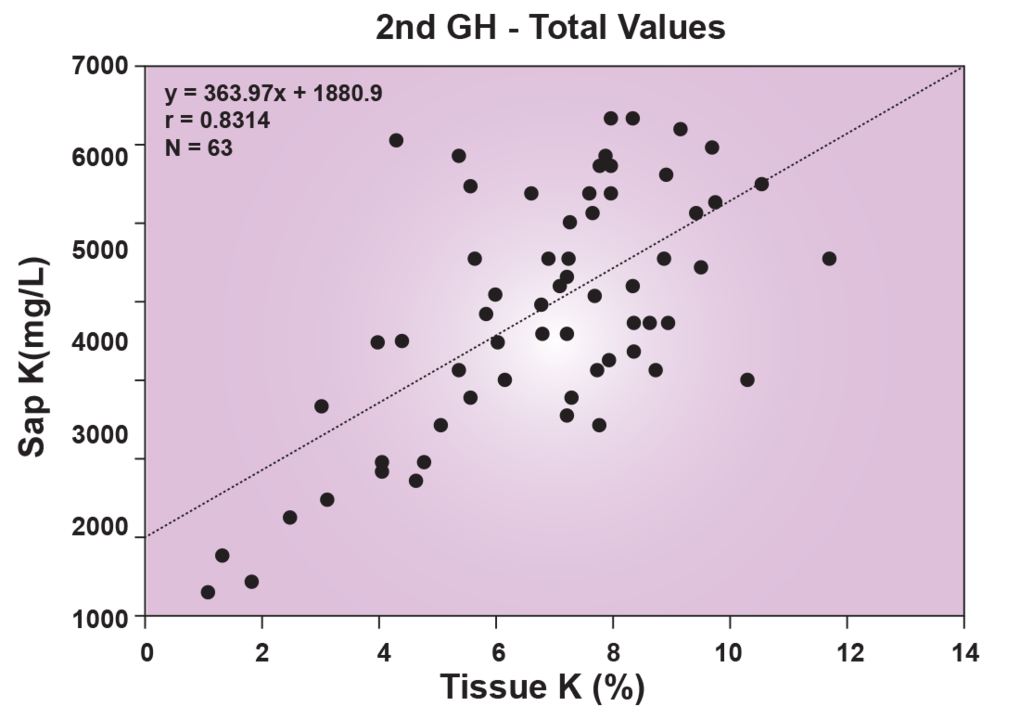
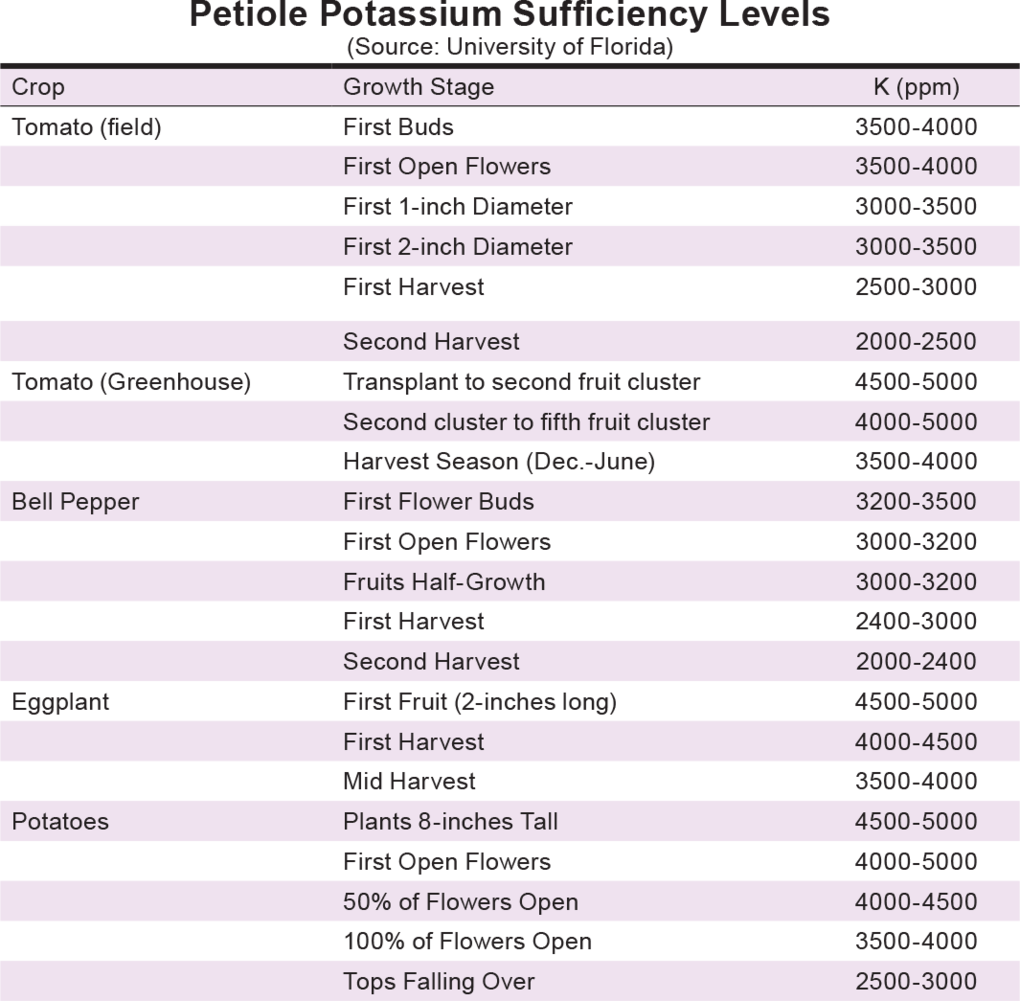
Results and Benefits
The K concentrations increased linearly in both the sap and dried tissue with increased amount of K applied (see figures 1 & 2) and the relationships were highly significant (P<0.0001). The correlation coefficient (r) was stronger between the LAQUAtwin Potassium Ion meter and ICP spectrometry results when totals of the replicates were used for correlation analysis – r values were 0.80 and 0.93 for first trial and second trial respectively. With these results, it was concluded that the LAQUAtwin Potassium Ion meter, which is easy to use and less expensive than standard laboratory analysis, is a valuable tool for onsite monitoring of plant’s K status. It was also concluded that 4500-5000 mg K/L for fresh petiole sap and 7.5% tissue are critical levels for K concentration in pak choi plant.
SUPPLEMENTARY INFORMATION
- Dilution – Undiluted sap can be analysed directly. However, sap for some crops has to be diluted to keep the determinations within the range of the calibrated standard curve. In another study conducted with LAQUAtwin Potassium Ion meter, it was found that sap diluted with water or 0.075M aluminum sulfate solution resulted in higher K recovery than undiluted one (Rosen et al). For testing sap diluted with 0.075M aluminum sulfate, 150ppm and 2000ppm K standard solutions with aluminum sulfate were prepared for calibration.
- Sap K Concentration - To determine K concentration of the undiluted sap, the meter reading obtained for the diluted sap should be multiplied by the dilution factor (final volume divided by original volume), which is ‘5’ in the method described above. Alternatively, set the meter coefficient to 5.00 (default value=1.00). This meter feature eliminates manual computation for diluted or even concentrated sample by using a coefficient that can be set from 0.01-9.90. Refer to the Multiplying Compensation Setting of the meter’s instruction manual.
References and Suggested Readings
- Chandrappa Gangaiah, Amjad A. Ahmad, Nguyen V. Hue, and Theodore J.K. Radovich. Comparison of potassium (K+) status in pak choi (Brassica rapa Chinensis group) using rapid cardy meter sap test and ICP spectrometry. The Food Provider. May 2015
- Carl J. Rosen, Mohamed Errebhi, and Wenshan Wang. Testing Petiole Sap for Nitrate and Potassium: A Comparison of Several Analytical Procedures. HORTSCIENCE 31(7):1173–1176.1996
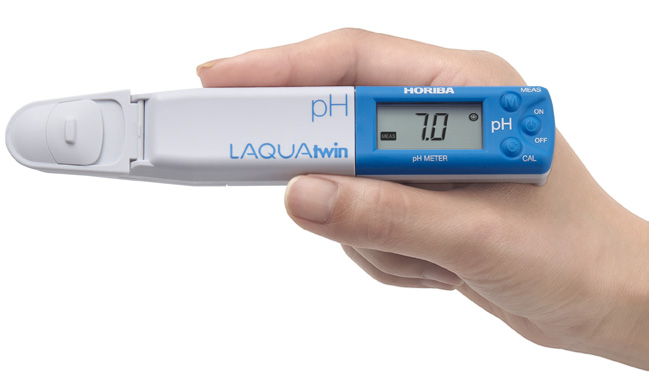
LAQUAtwin: the only meters with flat sensor technology.
HORIBA’s highly-sensitive, flat sensor technology opens up new possibilities for sampling and sample types. Only a small amount of sample is required, so you can easily sample in situ without the need for beakers or other labware. Sensors are easily replaced as required.
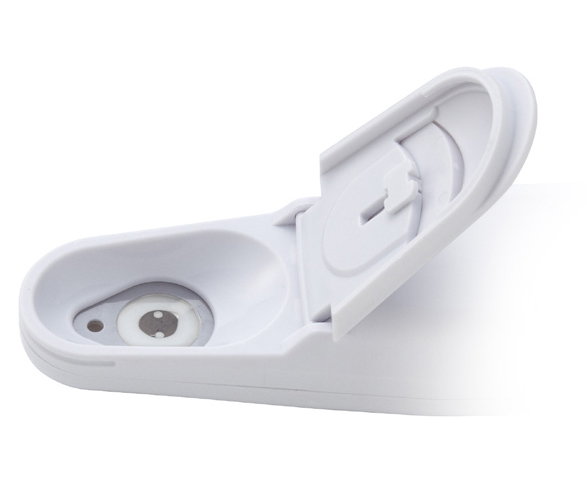
Calibrate and measure at the touch of a button — the smiley face will tell you when the result can be read.
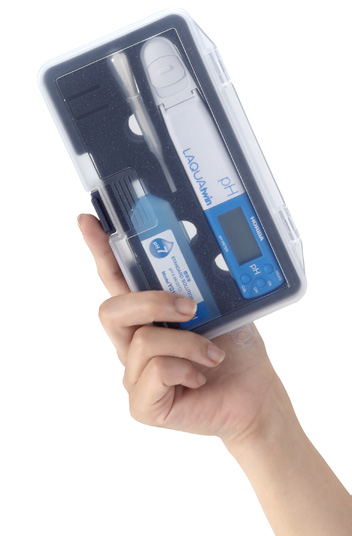
LAQUAtwin is fully waterproof and dustproof.
The meter and sensor are fully waterproof* and dustproof, so you can take it anywhere.
* IP67 rated. Will withstand immersion for 30 minutes at 1 m. Not suitable for underwater use.
Carry case comes as standard for handy portability.
The compact carry case contains everything you need for your measurements, including the standard solution and sampling sheets.


